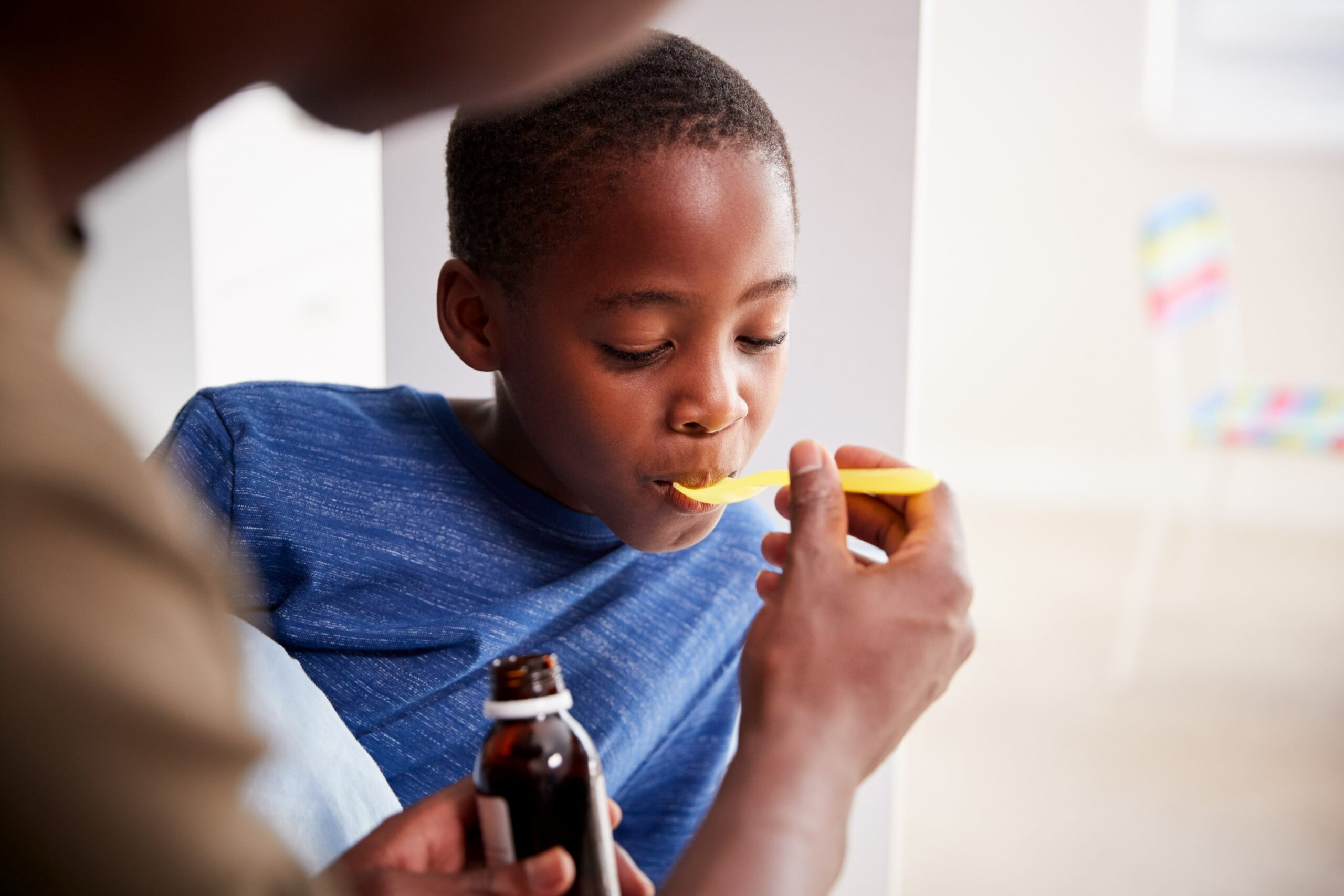The Benefits of Liquid Medicines for Paediatric Patients

Are you caring for a patient who is an infant, child, adolescent or young adult? In this blog, we will be discussing the benefits of liquid medicines for paediatric patients with dysphagia.
How do you give a child liquid medicines?
Before administering a medicine it is important to fully read the patient information leaflet which accompanies the medicine. If you have any questions following this, refer these to your healthcare professional. Please use the measuring device provided with the medicine or by your Pharmacist as this is the most appropriate option for the medicine the patient has been prescribed.
For small children, an oral syringe is often the best option. When using an oral syringe, follow these steps:
- Wash your hands and ensure the child is sitting upright
- Shake the bottle unless otherwise stated
- Remove the top from the bottle and insert the bottle adapter if necessary.
- Insert the top of the oral syringe into the bottle adapter.
- Turn the bottle upside down and pull the plunger until the medicine reaches the volume required.
- Gently remove the oral syringe from the bottle adapter.
- Put the top back on the bottle.
- Once the liquid is in the oral syringe, put the tip of the syringe inside the child’s mouth, between the gums and the inside surface of the cheek
- Squirt a small amount into the side of the child’s mouth and allow them to swallow, before administering more medicine
- Give the child a drink to wash the medicine down
- Wash the syringe with warm, soapy water and leave to dry away from heat and sunlight
Another option is to administer the medicine using a cup or spoon. This may be suitable for older children. To do this, you must:
- Wash your hands and ensure the child is sitting upright
- Shake the bottle unless stated otherwise on the label.
- Carefully pour the medicine into the medicine cup or medicine spoon according to the dose on the label.
- Give the dose to your child
- Give the child a drink to wash the medicine down
- Wash the cup or spoon in warm, soapy water and leave to dry away from heat and sunlight
What are the benefits of liquid medicines?
Easy to swallow
There is a concern at what age children can safely swallow tablets and capsules, it is generally thought to be around 6 years old [2]. An oral liquid medicine may be an easier to swallow option and therefore a more appropriate option for younger patients. [3]
Palatable
Rosemont’s oral liquid medicines are designed to palatable to ensure acceptability, aiding adherence to medication regimes[3].
The most appropriate dose is received
A liquid medicine allows prescribed doses to be much more flexible, ensuring the dose is age appropriate. Dose titration also allows for identification of effective dosages for an individual, based on patient response. [4]
For more information on liquid medicines for paediatric patients, visit this page: Children’s Medicine.
ROS000027-011 DOP May 2023
- Great Ormond Street Hospital for Children NHS, ‘How to give your child liquid medicines’, 04/2020, https://www.gosh.nhs.uk/conditions-and-treatments/medicines-information/how-give-your-child-liquid-medicines/. Accessed May 2023.
- EMA CHMP Reflection Paper: Formulation of choice for the paediatric population (2006) Available at https://www.ema.europa.eu/en/documents/scientific-guideline/reflection-paper-formulations-choice-paediatric-population_en.pdf Accessed July 2023.
- EMA CHMP & PDCO Guideline on pharmaceutical development of medicines for paediatric use (2013). Available at: https://www.ema.europa.eu/en/documents/scientific-guideline/guideline-pharmaceutical-development-medicines-paediatric-use_en.pdf Accessed July 2023.
- Schuck RN, Pacanowski M, Kim S, Madabushi R, Zineh I. Use of Titration as a Therapeutic Individualization Strategy: An Analysis of Food and Drug Administration-Approved Drugs. Clin Transl Sci. 2019 May;12(3):236-239. Available at https://www.ncbi.nlm.nih.gov/pmc/articles/PMC6510374/ Accessed June 2023







